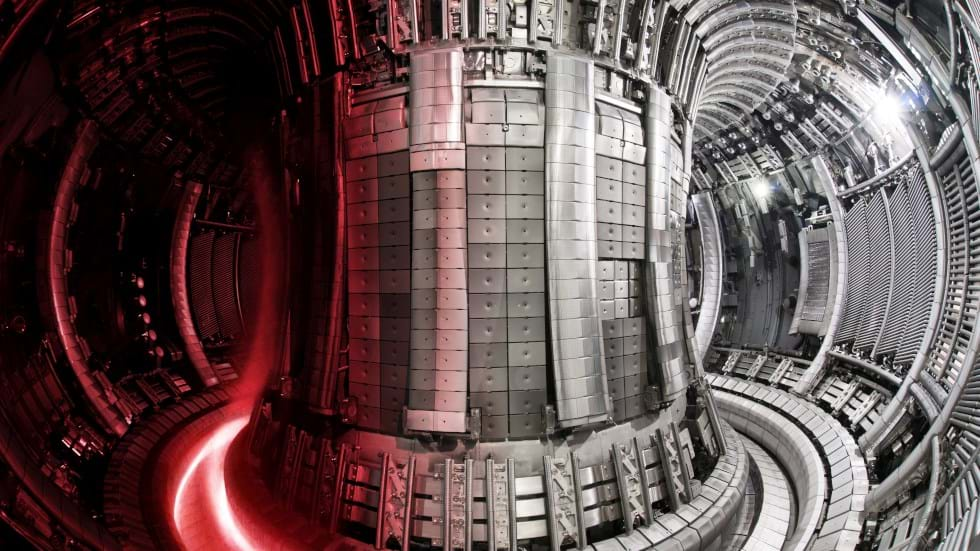JET’s swansong experiments break fusion record

THE final experiments at the UK’s JET fusion power plant have produced a world record for energy output.
JET – or the Joint European Torus – conducted its final set of fusion tests last year and researchers have now revealed that they managed to consistently produce power for five seconds, resulting in a record-breaking output of 69 megajoules. This beats the reactor’s previous record of 59 megajoules, set in in 2021.
Andrew Bowie, UK minister for nuclear and networks, said: “JET's final fusion experiment is a fitting swansong after all the groundbreaking work that has gone into the project since 1983. We are closer to fusion energy than ever before thanks to the international team of scientists and engineers in Oxfordshire.”
Stuart Mangles, head of the space, plasma and climate research community at Imperial College London, said: “JET has now produced the largest amount of fusion energy to date – nearly 69 megajoules of energy.”
Mangles says while the energy produced would only be enough to make around 600 cups of tea, he expects the most important development is the methods researchers deployed to control the plasma and allow the record to be reached.
The fusion process takes place inside a doughnut-shaped reactor called a tokamak. The deuterium and tritium fuel is heated into a plasma at temperatures exceeding 100m°C. At these extremes the atoms can be forced to overcome the forces that repel them and fuse together releasing energy. Copper-coiled magnets were used at JET to manipulate the plasma to prevent it from touching the reactor walls. The next generation of facilities will use superconducting magnets that allow the fusion process to run for much longer and achieve net energy output.
Researchers at JET got less energy out than they put in, but the lessons learned conducting the tests will provide valuable insights for the next generation of fusion facilities. This includes France’s ITER facility which is expected to produce net energy after full-scale experiments begin in 2035 and the UK’s prototype STEP plant from the 2040s.
Emmanuel Joffrin, EUROfusion tokamak exploitation task force leader, said: “Not only did we demonstrate how to soften the intense heat flowing from the plasma to the exhaust, we also showed in JET how we can get the plasma edge into a stable state thus preventing bursts of energy reaching the wall. Both techniques are intended to protect the integrity of the walls of future machines. This is the first time that we've ever been able to test those scenarios in a deuterium-tritium environment.”
Scientific experiments at JET stopped in December and attention has now turned to the 16-year decommissioning process and the lessons that can be learned as chemical engineers help take the facility apart.
Recent Editions
Catch up on the latest news, views and jobs from The Chemical Engineer. Below are the four latest issues. View a wider selection of the archive from within the Magazine section of this site.




